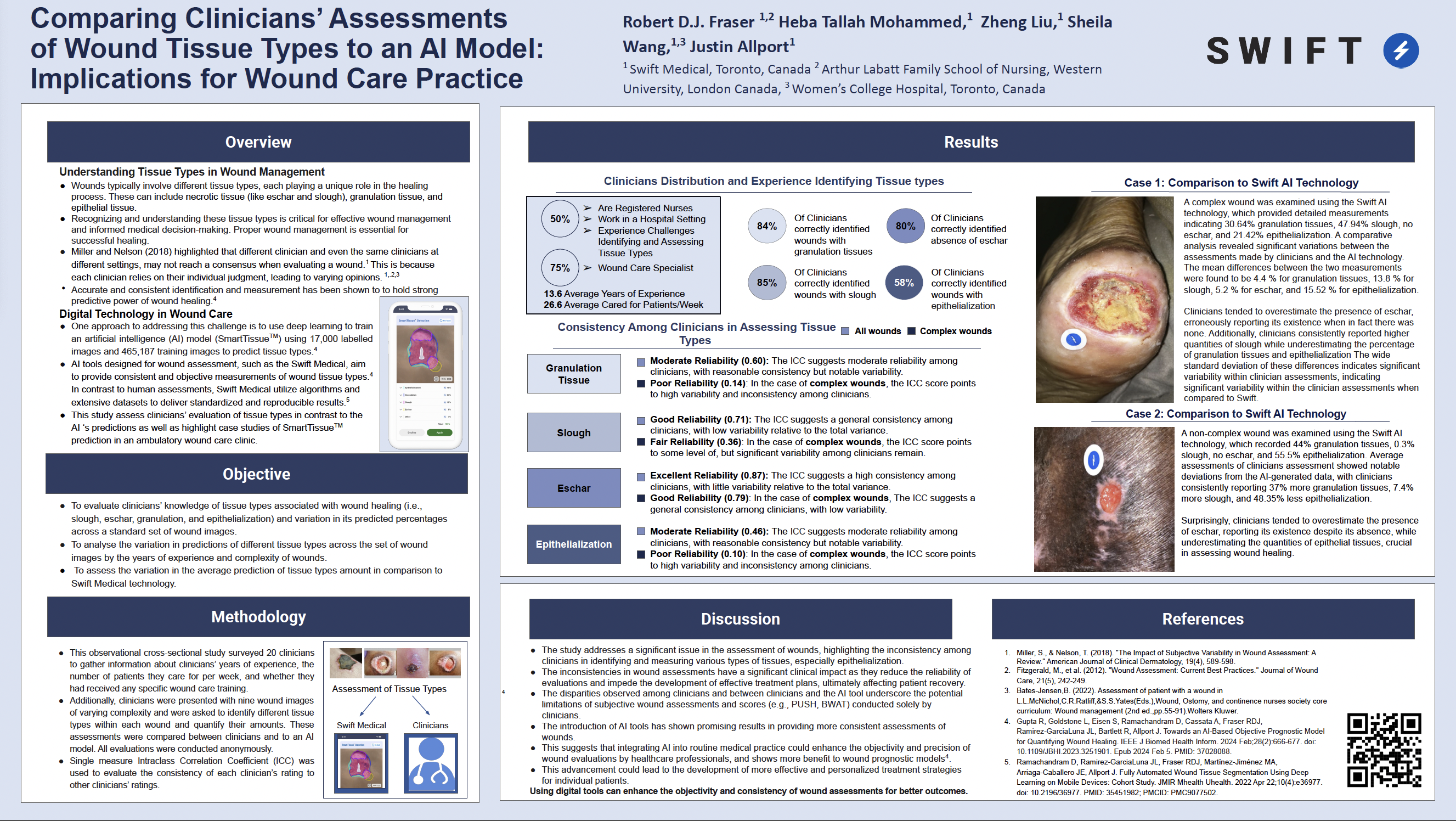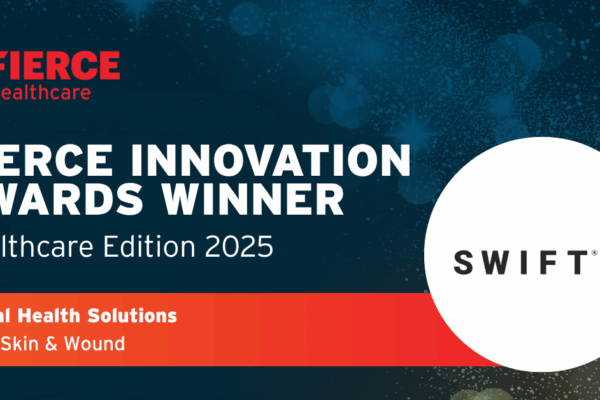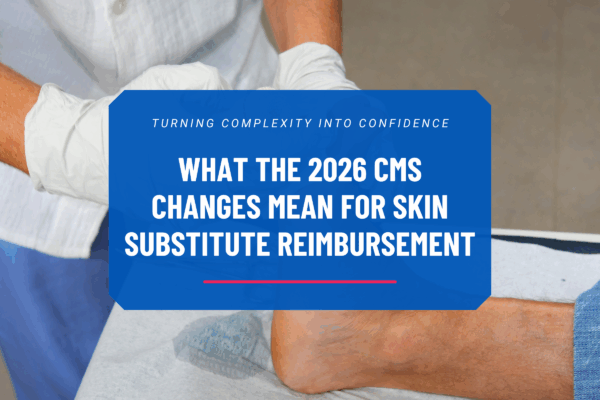This poster was featured at SAWC Fall 2024 in Las Vegas, Nevada.
Authors: Robert D. J. Fraser, Heba Tallah Mohammed, Zheng Liu, Sheila Wang, Justin Allport
Introduction: Wounds typically involve different tissue types, each playing a unique role in the healing process. These can include necrotic tissue (like eschar and slough), granulation tissue, and epithelial tissue. Recognizing and understanding these tissue types is critical for effective wound management and informed medical decision-making. Proper wound management is essential for successful healing. Accurate and consistent identification and measurement have been shown to hold strong predictive power of wound healing. One approach to addressing this challenge is to use deep learning to train an artificial intelligence (AI) model (SmartTissueTM) using 17,000 labelled images and 465,187 training images to predict tissue types. This study assesses clinicians’ evaluation of tissue types in contrast to the AI‘s predictions as well as highlights case studies of SmartTissueTM prediction in an ambulatory wound care clinic.
Objectives:
- To evaluate clinicians’ knowledge of tissue types associated with wound healing (i.e., slough, eschar, granulation, and epithelialization) and variation in its predicted percentages across a standard set of wound images.
- To analyse the variation in predictions of different tissue types across the set of wound images by the years of experience and complexity of wounds.
- To assess the variation in the average prediction of tissue types amount in comparison to Swift Medical technology.
Results:
- The disparities observed among clinicians and between clinicians and the AI Tool underscore the potential limitations of subjective wound assessments and scores (e.g., PUSH, BWAT) conducted solely by clinicians.
- Integrating AI into routine medical practice could enhance the objectivity and precision of wound evaluations by healthcare professionals, and shows more benefit to wound prognostic models.
To learn more about the research conducted for this poster, or to speak with the Swift Medical team about digital wound care, contact us.





